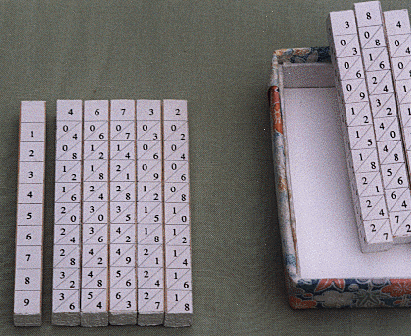In 1614 John Napier (1550-1617) showed how logarithms could be used for multiplication and division. He developed a system of rods, known as Napier's bones, to facilitate these operations.

See http://www.geo.tudelft.nl/mgp/people/gerold/indnap.htm#napier for information on how to use Napier's bones.
In 1623 Wilhelm Schickard (1592-1635), in what is now Germany, made a mechanical device for adding and subtracting numbers. The Calculating Clock had 6 wheels and worked similarly to an odometer. Interestingly, the machine and plans were lost, only to be found in 1935 and subsequently lost again during WWII. They were found again in 1956 and one of these machines was actually constructed in 1960.
In 1625 (or there about) William Oughtred (1575-1660) invented the slide rule.

In 1642 the French mathematician Blaise Pascal developed a mechanical adding machine that came to be called the Pascaline. This device became far more well known than Schickard's calculating clock even though it was more limited.

In 1671 Gottfried Leibniz, a German mathematician, invented a machine called the stepped reckoner that could multiply 5 digit and 12 digit numbers yielding up to 16 digit number.